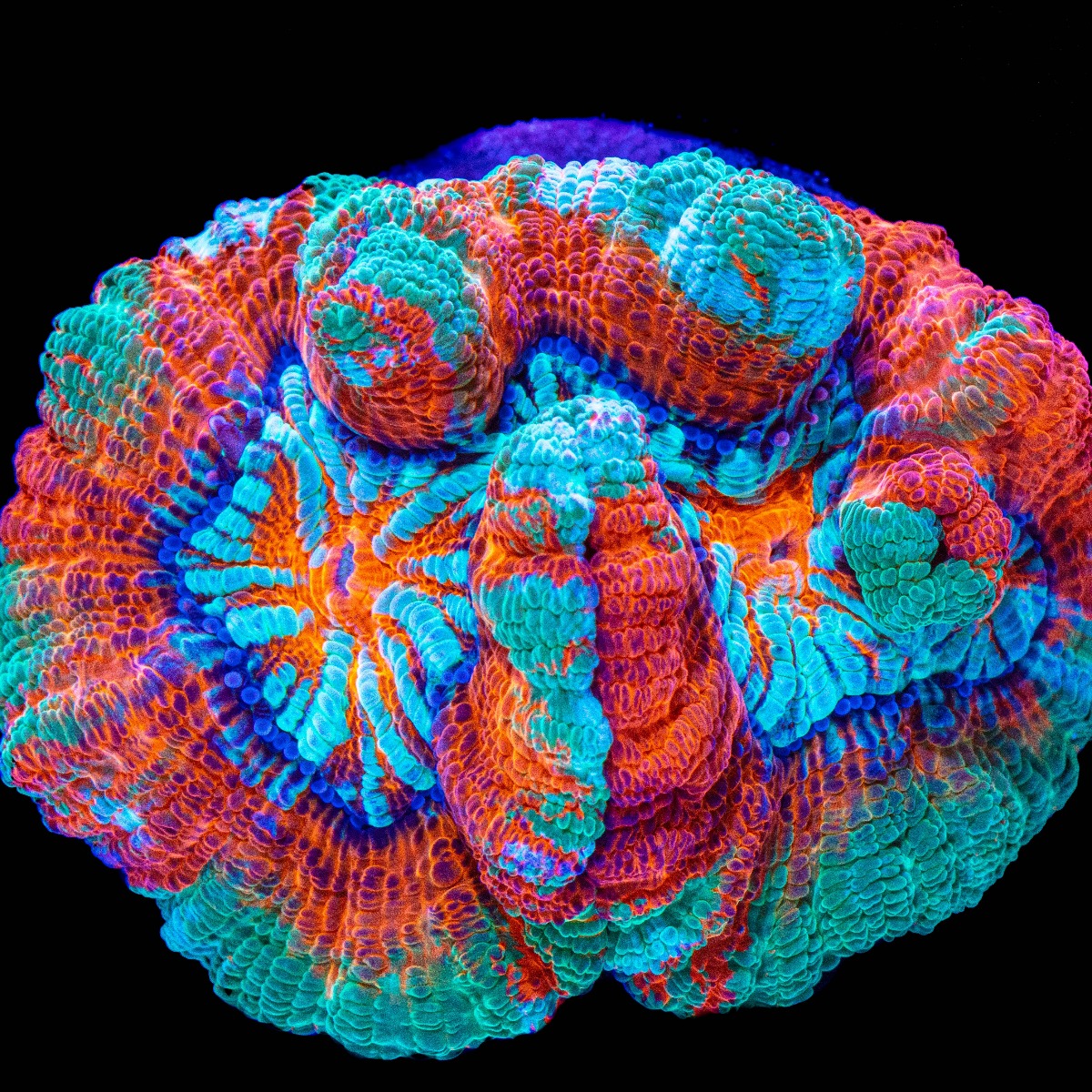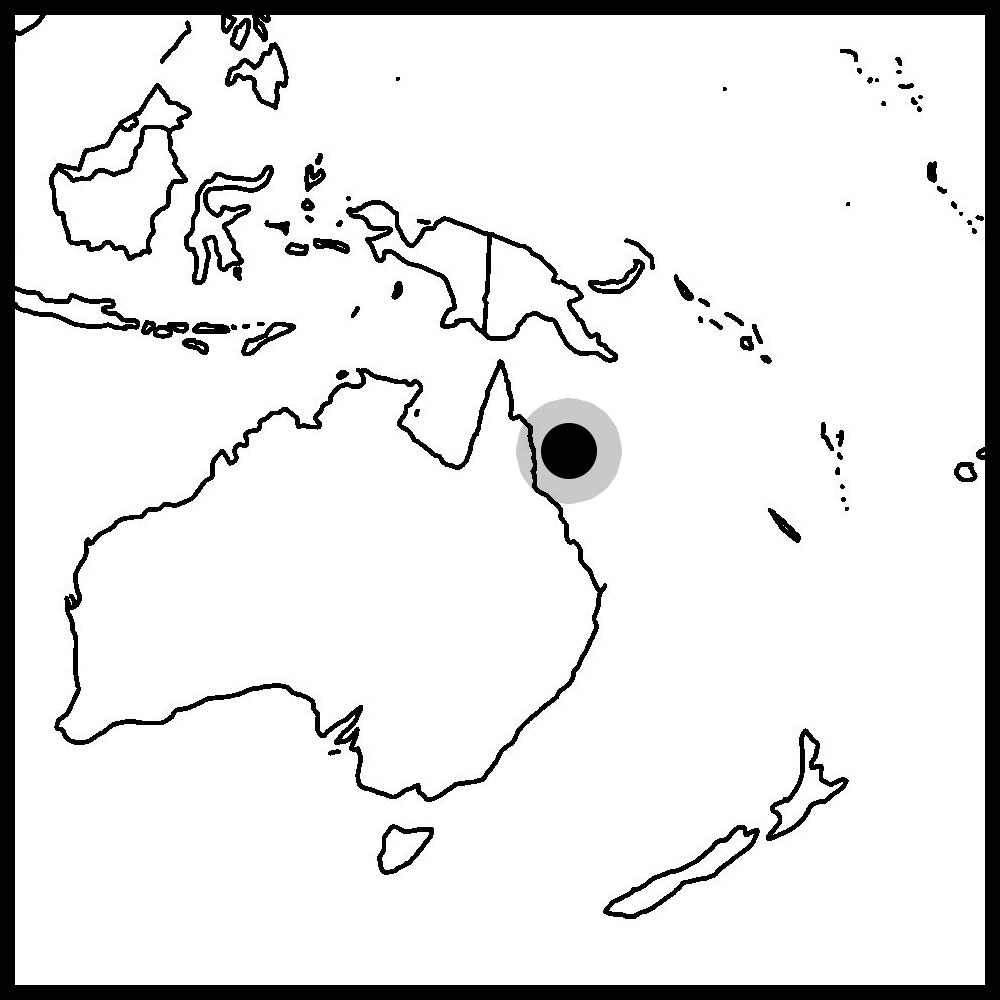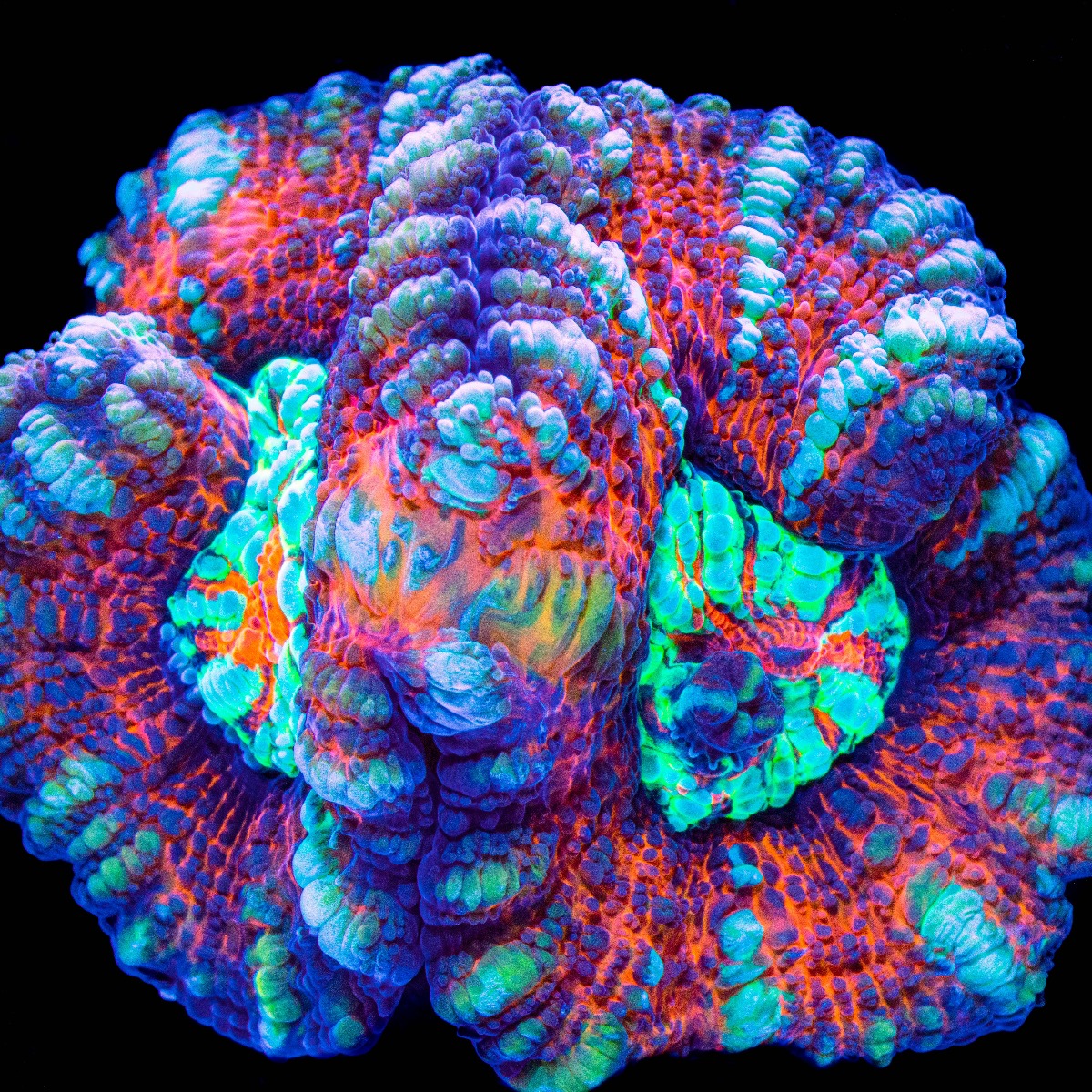HOW TO CARE FOR YOUR AUSTALOPHYLLIA CORAL

Ultra Rainbow Australophyllia wilsoni
If you have never heard of this coral, it is understandable. For years this coral has been known as Symphyllia and for a short stint was on team Lobophyllia, but in 2016 it was given its own Genus. The Australophyllia we typically see in the hobby now is Australophyllia wilsoni.
This hobby likes to list almost every coral as rare or unique to drum up some excitement for a particular specimen, but Australophyllia are actually uncommon to find in the wild. As a result, this coral is one of the more rare large polyp stony corals in the industry, which is a shame because they are exceptionally beautiful corals. They have insane color patterns and come in a variety of colors which makes them fun to track down and collect for those looking for a show piece LPS that is off the mainstream path.
![]() Location
Location
Australophyllia are found mainly in Western Australia. The thing about Western Australia is that the collection sites can differ from one another substantially when it comes to temperature. Some have suggested that there may be multiple species of Australophyllia, some that are tropical in nature that like temperatures in the 78-80 range and a cooler water variety that likes the temperature closer to 75 degrees or maybe even a bit cooler. It is hard to say which one is which and how adaptable they are to temperature. Some hobbyists struggle with this coral so one possible solution is to lower the temperature slightly in case you got one of the cooler water varieties.

![]() Lighting
Lighting

Ultra Rainbow Australophyllia wilsoni
As for how much light to provide, we do not make any special consideration for these corals. We primarily keep Australophyllia in low to medium light intensity which is around 50 to 100 PAR. Most types of Australophyllia are adaptable to different lighting intensities but the first priority should always be “don’t blow away corals with light.” It does not take very long to overexpose corals and that can lead to bleaching and a rapid decline in health. The additional light might also exacerbate the temperature issue we talked about earlier, so too much light may cause both a negative effect in light exposure as well as elevated temperatures.
It is far better to provide substandard lighting intensity and slowly correct the situation by slowly adjusting the light or re-locating the coral into brighter areas of the tank RATHER THAN accidentally blasting the Australophyllia with too much light and then trying to nurse it back to good health after it bleaches. That tends to go poorly. Once these corals start going down hill, it is challenging to reverse that trend.
One aspect of the lighting that might be interesting to pursue is the type of lighting and color spectrum. Here we typically have corals under Ecotech Radions with a very blue appearance. The Australomussa have taken on a few different shades of red, blue, and teal. I wonder if their appearance would change substantially if given different types of light. Some LPS really change color while others stay more or less consistent. I haven’t yet tried to do anything like this, but it would not surprise me if changing the light spectrum or growing them under T5 would alter their look.
Low Light
Low light translates to about 30-50 PAR
Medium Light

Medium Light is between 50-150 PAR
High Light

High Light is anything over 150 PAR
Lighting is a loaded topic, so for a more in-depth discussion of lighting, please see our Deep Dive article.
![]() Feeding
Feeding
Direct feeding is something I whole heartedly recommend for Australophyllia. This coral changes dramatically in size when fed. I can tell immediately which specimens are recently imported wild colonies vs the ones we grow for long term aquaculture based on how much their size and shape transformed. When these corals get settled in and eating well, they can grow huge to almost resemble a Trachy brain where before they look more like a maze brain.
I’ve been feeding them primarily frozen shrimp, both krill and mysis for some time but recently I’ve been trying some powdered plankton foods. It’s hard to pay attention to every coral’s feeding habits, but I decided to shoot some time lapses of this coral eating first just frozen, then a mix of frozen and Reef Roids, and then lastly just Reef Roids. At least with these specimens it looks like they took to the powdered foods pretty well, so that’s something to pay attention to.

![]() Flow
Flow
Australophyllia appreciate low to medium flow. There are two things that I am looking to accomplish with flow for this coral. The first is to give it enough flow to keep it clean. Detritus build-up can cause the coral to die back where it collects. Providing elevated flow around the coral can prevent this accumulation. Even moderate flow can serve to keep the coral clean as the coral does a good job of slugging off debris that settle on it.
You will know if you are overdoing it if the flow is slamming one side of the coral and it is drawn tight to the skeleton all the time. If this sort of flow isn’t adjusted it can cause the coral to die as the tissue will rub against the skeleton causing damage. If you are feeding and the coral balloons up like we talked about, you will easily see if it getting too much flow so you should back off the pumps if you can adjust them or move the coral to a lower flow area of the tank.
Providing periodic low flow or even zero flow is beneficial for this coral for the purposes of feeding. In the case of powdered foods, I recommend zero flow for about 20 min to give the coral the best opportunity to swallow the food as any flow tends to scatter it which can lead to some of the problems people have with overfeeding.
![]() Water Chemistry
Water Chemistry
That is a nice segue into the topic of recommended Water Chemistry for Australophyllia. There are problems associated with overfeeding so let’s talk about phosphate and nitrate. Phosphate and Nitrate are great general measurements of water cleanliness. They show up mainly in the food we provide the tank but decaying plant and animal matter in the aquarium can also elevate their levels in the water. We generally shoot for about 5-10ppm nitrate and 0.05-0.1ppm phosphate.
If Nitrate levels get too high corals may react negatively by taking on drab coloration or suddenly dying back in extreme cases. If Phosphate levels are too high, it may feed into an unwanted algae bloom or spur on the growth of other undesirable organisms that can stifle the growth of corals.
If given the choice I would much prefer too much nutrient rather than too little. For a short period there was a push in the hobby to have near zero levels of nitrate and phosphate. This is done through techniques like carbon dosing or GFO which can aggressively bring those numbers down. Ultra low nutrient levels though come with their own sets of issues especially with LPS like Australophyllia. There is such a thing as too clean and I would argue the problems caused by near zero nutrient levels are much worse than those caused by an abundance of nitrate and phosphate.
Corals require some level of nitrate and phosphate available to them. When starved out, the corals first take on a shrunken emaciated look and then they start dying off. After that there is a risk for blooms of unwanted organisms such as brown dinoflagellates that thrive in ultra low nutrient conditions.
Aside from the water cleanliness parameters of the tank, you will want to make sure that the major ions for skeletal growth are in a healthy range.
Calcium is one of the major ions in saltwater. In the ocean, its level hovers around 425 parts per million. As a coral grows calcium is absorbed from the water and used to forms its calcium carbonate skeleton.
Alkalinity a collection of ions that generally equate to carbonate availability in the water. The official definition is that it is the amount of acid required to lower the pH of saltwater to the point bicarbonate turns into carbonic acid. If you have more alkalinity, it can soak up more acid. Less alkalinity and you have less buffering capacity making the tank more susceptible to chemical changes.
In practice alkalinity tends to be the parameter that fluctuates the most. In natural sea water, the alkalinity of the water measures around 7 or 8 dkh though most salt mixes these days mix up closer to 8 to 9 dkh. Some aquarists like to overload this parameter a little and keep their tanks around 10 or 11 dkh with the rationale that having elevated calcium and alkalinity in the water contributes to faster stony coral growth.
If you are experiencing low levels, say for example, low alkalinity, you can add a supplement to boost it, but first double check your test results (and test kit) to make sure you are actually experiencing low levels, and then make the change slowly over the course of weeks until you reach a level more in line with natural sea water levels.
If you are having trouble maintaining calcium and alkalinity, keeping an eye on Magnesium can help. Raising both calcium and alkalinity together can be tricky because of how they interact. Calcium ions and carbonate want to react with one another. Addition of a calcium supplements often comes with a corresponding fall in alkalinity levels and vice versa. If you are experiencing this in your systems, it is normal by the very nature of those ions but it is something you want to try and minimize. If you are experiencing dramatic swings of calcium and alkalinity every time you use an additive, you may want to look at your Magnesium levels. In short, Magnesium acts to increase the overall bioavailability of alkalinity compounds in the water thus providing more chemical stability. In the ocean, Magnesium sits at about 1350 ppm.
That should give you a little bit of background on the chemical parameters to keep an eye on.
![]() Aquaculture
Aquaculture
Typically a relatively slow growing large polyp stony coral like Australophyllia would be an unattractive candidate for long-term aquaculture. Here’s the thing though…Australomussa are actually rare in the wild. Propagation might be necessary to have these corals available in the industry in the future.
While they are not the fastest growing coral, they do propagate well. They cut and heal well from a band saw. They have multiple mouths for feeding so each cutting has a good chance of recovery after cutting. Like with almost every coral, you will probably have the best luck propagating corals that are growing so we prefer to only start cutting pieces that have been in our systems a while.
![]() Conclusion
Conclusion
Ok, that about does it for Australophyllia. So what kind of tank is Australophyllia best suited for? I see Australophyllia as a show-piece LPS for hobbyists that are looking for something different. Not too many people are even aware of this particular coral and there are some amazingly beautiful examples out there. I personally am on the lookout to find some of the more exotic color variants that I have only seen pictures of. Ours are mostly a mix of red, blue, and teal, but I have seen pictures of some that are hot pink or even bright yellow.

Hopefully this video is helpful for those looking to try them for the first time. If you would like more information or perhaps purchase Australophyllia for your home aquarium, I invite you to see what we have in stock. Like I said, we are always on the lookout for new and interesting color morphs of this coral to add to our collection, and hopefully yours as well.
Until next time, happy reefing.
